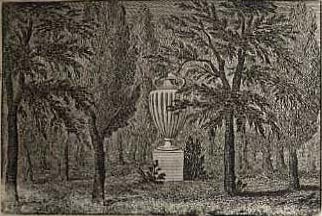Innovators
As the 18th century dawned, English printing largely depended on the Continent, particularly the Dutch, for its typefaces. But after the 1730s, English typography took on a character of its own, thanks to innovators such as William Caslon and John Baskerville.
Caslon (1693-1766) issued his first Latin-alphabet specimen sheet in 1734. His type—which became immensely popular for its legibility, versatility and “thoroughly English” common sense—ended his nation’s dependence on Dutch typefaces. The Worcestershire-born Caslon, who had begun his career as a metal-engraver, also designed Arabic, Hebrew, and Greek fonts, among others.
Baskerville (1706-1775), who had made his fortune in Birmingham as a japanner (decorator of metal articles with varnish and paintings), became involved in everything from type design to improving the printing press. In the introduction to his edition of Paradise Lost, Baskerville expressed admiration for Caslon’s work; however, there was also some professional rivalry between the two men, evidenced when Baskerville wrote to a friend, “pray put it in no one’s power to let Mr. Caslon see” a set of punches Baskerville was working on for a project in 1752.
Baskerville’s type, which is still widely used today, thickened the thick parts of the Roman letter and made the thin parts thinner, achieving a sharp, smart look. Baskerville also made his type’s serifs spikier, and his Latin letter was rounded and more open than many predecessors’. The Greek letters he designed for Oxford University, however, were more condensed, and they have been called by some critics too cramped and stiff. Other Baskerville innovations included the use of bold, dark ink and fine-meshed wove paper. His longtime live-in lover and eventual wife, Sarah, glazed paper for London booksellers.
Caslon and Baskerville influenced such other innovators as the Foulis brothers and John Bell.

